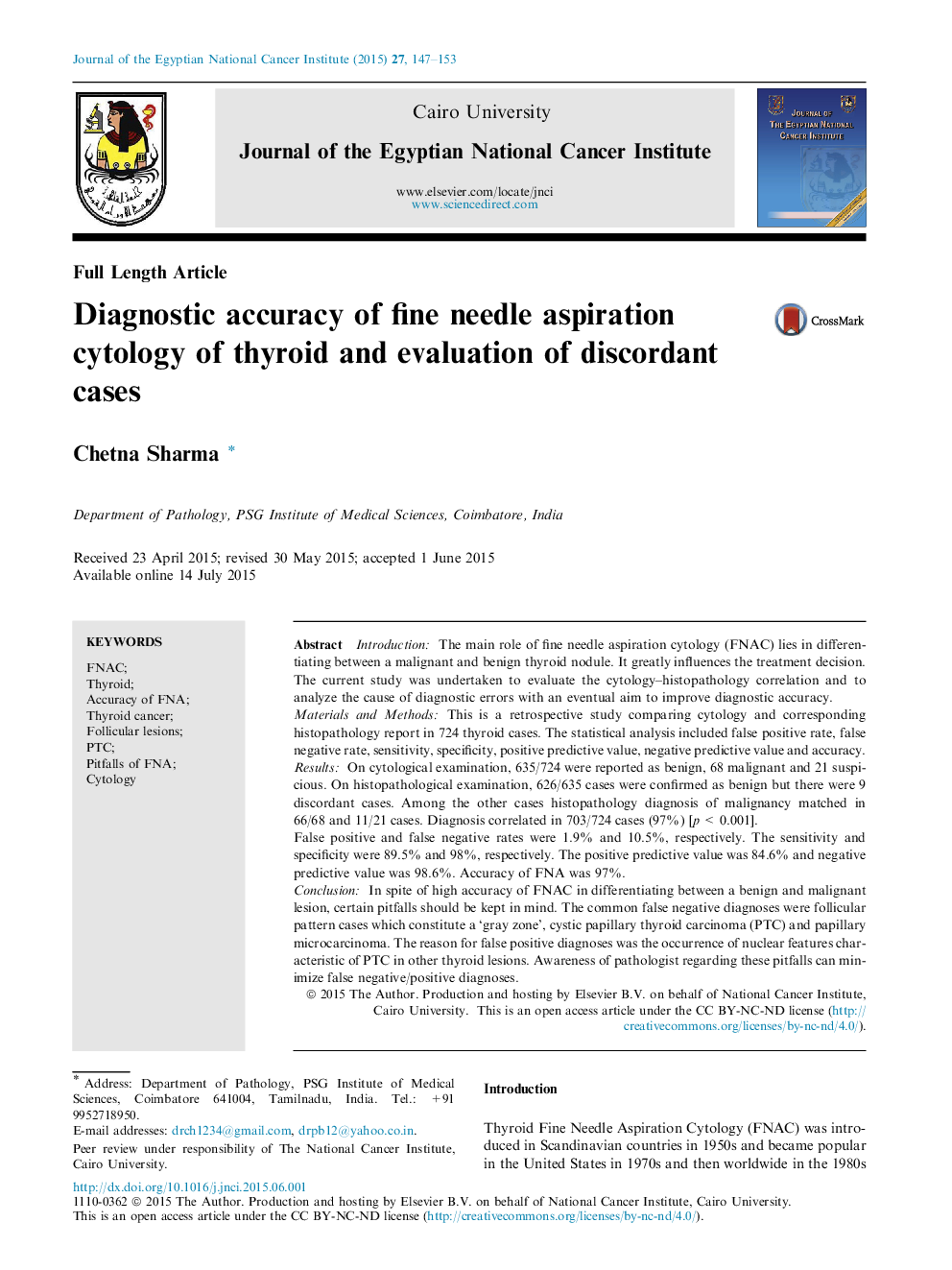| Article ID | Journal | Published Year | Pages | File Type |
|---|---|---|---|---|
| 3988961 | Journal of the Egyptian National Cancer Institute | 2015 | 7 Pages |
IntroductionThe main role of fine needle aspiration cytology (FNAC) lies in differentiating between a malignant and benign thyroid nodule. It greatly influences the treatment decision. The current study was undertaken to evaluate the cytology–histopathology correlation and to analyze the cause of diagnostic errors with an eventual aim to improve diagnostic accuracy.Materials and MethodsThis is a retrospective study comparing cytology and corresponding histopathology report in 724 thyroid cases. The statistical analysis included false positive rate, false negative rate, sensitivity, specificity, positive predictive value, negative predictive value and accuracy.ResultsOn cytological examination, 635/724 were reported as benign, 68 malignant and 21 suspicious. On histopathological examination, 626/635 cases were confirmed as benign but there were 9 discordant cases. Among the other cases histopathology diagnosis of malignancy matched in 66/68 and 11/21 cases. Diagnosis correlated in 703/724 cases (97%) [p < 0.001].False positive and false negative rates were 1.9% and 10.5%, respectively. The sensitivity and specificity were 89.5% and 98%, respectively. The positive predictive value was 84.6% and negative predictive value was 98.6%. Accuracy of FNA was 97%.ConclusionIn spite of high accuracy of FNAC in differentiating between a benign and malignant lesion, certain pitfalls should be kept in mind. The common false negative diagnoses were follicular pattern cases which constitute a ‘gray zone’, cystic papillary thyroid carcinoma (PTC) and papillary microcarcinoma. The reason for false positive diagnoses was the occurrence of nuclear features characteristic of PTC in other thyroid lesions. Awareness of pathologist regarding these pitfalls can minimize false negative/positive diagnoses.
